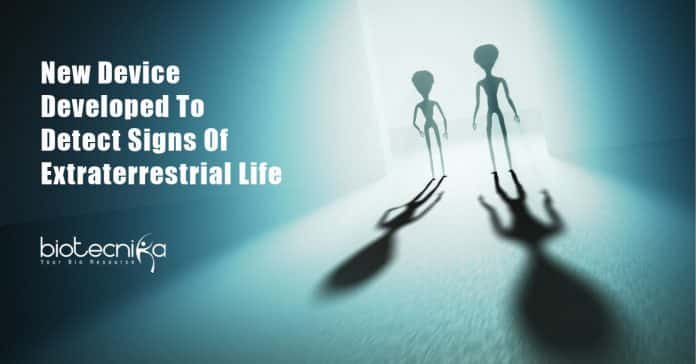Scientists develop a new device to detect indications of extraterrestrial life
Different types of life might have once existed, or might still exist, on other planets, although Earth is uniquely situated in the solar system to support creatures that call it home, however, discovering traces of past or present lifeforms on other worlds is challenging. A totally automated microchip electrophoresis analyzer was developed by scientists reporting in ACS’ Analytical Chemistry. Organic biosignatures in extraterrestrial soil can be detected someday with the automated microchip electrophoresis analyzer when incorporated right into a planetary rover.
An essential part of the evidence for life beyond Earth is the existence of specific natural particles. In earlier space missions to Mars, to separate and detect substances, it has based upon gas chromatography combined to mass spectrometry (GC-MS). But, when water, minerals, or salts are also in the samples, the strategy has constraints for the analysis of some molecules, such as organic acids. Microchip electrophoresis (ME)-based separations, complied with by laser-induced fluorescence (LIF) detection, would be excellent. However, current tools are just partially automated, which wouldn’t work for interplanetary missions.
A fully automated fashion, a portable, battery-powered ME-LIF instrument that could accept a sample and perform labeling
, separation, and detection of organic molecules were what Peter Willis and colleagues wanted to develop.A device that included 2 microchips was developed by scientists. The 2 microchips included the one, ME chip, for separating compounds – and a LIF detection system, and one for processing as well as labeling a liquid sample. The scientist placed the device to the test in a simulated Mars mission in a Chilean desert, after optimizing the device. On a remotely deployed rover system, the analyzer was combined with a mobile subcritical water extractor. The rover drilled into the soil to accumulate samples, which were delivered to the extractor, and later, water was added to the soil samples, and to remove substances for evaluation, these samples were heated.
From three of four drilling locations, the device identified parts per billion levels of amino acids in soil. Notably, the level of sensitivity was 3 times higher than the magnitude reported for techniques based on gas chromatography combined mass spectrometry.
For preparing this instrument for spaceflight and extraterrestrial conditions, more research is required. For missions seeking indications of life beyond Earth, this study lays the foundation for developing ME-LIF instruments.
Scientists develop a new device to detect indications of extraterrestrial life
Author: Sruthi S






























